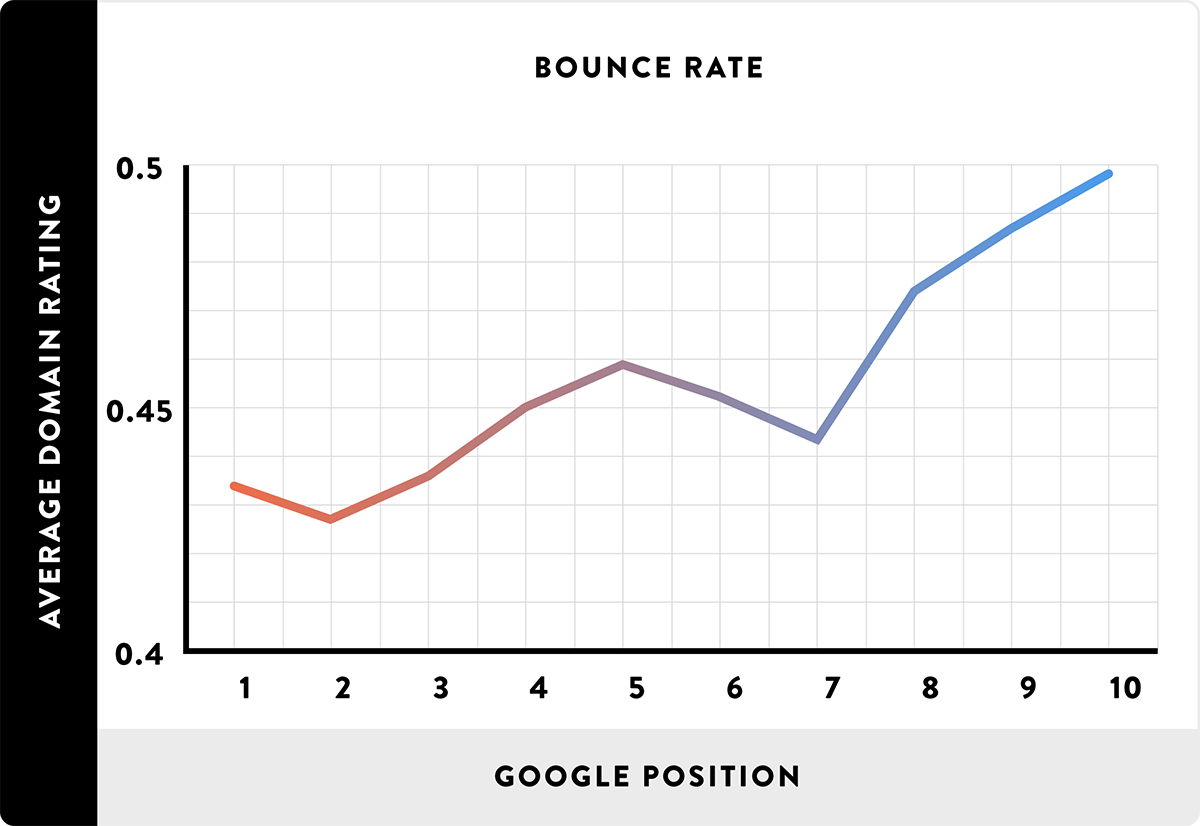A high bounce rate is a sign of many things that could be wrong with your website. This includes poor content, a bad user experience, and inaccessible navigation system, or a counterintuitive website design.
If you are struggling with a high bounce rate, it is crucial to know the exact reasons. Without knowing the root cause of the high bounce rate, you won’t be able to fix it. In this blog post, we are going to discuss a few possible reasons why some websites may have a high bounce rate. We’ll also share tips along the way on how you can fix the issue and lower the bounce rate to make your website more SEO-friendly.
Before we jump on to that, however, let’s start by discussing what bounce rate is and how does it impact a website’s search engine rankings.
Bounce rate

This is how Google defines bounce rate:
“Bounce rate is single-page sessions divided by all sessions or the percentage of all sessions on your site in which users viewed only a single page and triggered only a single request to the Analytics server.”
If it is a confusing definition, here is a simpler version.
The bounce rate of a website refers to the percentage of people who land on a web page on the site and leave without clicking on any link (e.g., taking action, such as clicking on a CTA) or any other web page.
Is the bounce rate important?
Yes. Bounce rate is important.
As we discussed in the beginning, a high bounce rate is an indication of several problems in a website — from poor website design to low-quality content.
More specifically, bounce rate is essential because:
- A high bounce rate indicates that most website visitors aren’t not converting, i.e., they are not clicking on any link or taking the action you want them to take.
- Second, bounce rate may also have a direct impact on a website’s search engine rankings. One study found a direct correlation between low bounce rate and higher search engine rankings.

Image source: Backlinko
What could be the reasons for a high bounce rate?
Let’s jump to our main topic then.
Here are a few of them.
1. Low-quality content
If a web page has low-quality content, that creates a significant negative impression. Consequently, users won’t feel encouraged to check out other pages on the website. This will lead to a high bounce rate.
Secondly, if the content isn’t interesting, useful, or captivating, users will also not take the desired action — for example, clicking on the call-to-action button. This will also increase the bounce rate.
2. If the web page does not mean the visitor’s expectations
When online users visit a web page, they have certain expectations from it. Most website visitors are seeking some sort of information.
If your web page does not meet their expectations — if it does not have the correct information that they’re seeking — they will leave the website without clicking on any button or web page.
Therefore, it is vital that you do two things right:
- Make sure to create pages — and their content — in accordance with your visitors’ search intent. Do not just optimize for keywords. Instead, try to create your pages addressing the problems your visitors may have and focusing on how you could help them.
- Second, make sure to create descriptive and accurate meta tags — which leads to our next point.
3. Accurate title tags and meta descriptions
The title tag and meta description of your web page play a crucial role in setting the aforementioned expectations. If the title says something different than what the content of the web page is, it will most likely result in a high bounce rate.
For example, suppose a user searches for “buy a washing machine.” On the search engine result page, she finds your web page that has the following title: “Buy washing machine | Free shipping.”
When the user clicks and lands on the web page, she finds an article that just compares different types of washing machines. What do you think the user will do? She will most likely quit the page because the meta information wasn’t accurate.
4. A poor or inaccessible website navigation structure
The bounce rate on a website will remain low if its website visitors also click on other web pages. One of the most common ways to find those other pages is via the main menu.
If, for some reason, the menu is accessible or poorly designed, it will create problems for users who want to browse your website. Therefore, it is important that the menu — and all the items in it — is self-explanatory, clear, familiar, and easily accessible.
5. Poor website design and user experience
Bad UI and UX will almost always lead to a significantly high bounce rate. The quality of your content won’t even matter if the website design and user experience aren’t up to par.
Take a look at the following example.
If your website looks like this, chances are that it is the poor, unpleasant, and counterintuitive website design that is causing the high bounce rate.
6. Web pages that take forever to load
Online users just do not like to wait. If your web page does not load within a couple of seconds, they will just leave, resulting in a high bounce rate because they didn’t click on any web page or link.
Google analyzed approximately 11 million web pages. They found out that slow loading web pages are directly related to a high bounce rate.
Check how quickly your web pages load. If they take more than 2 seconds, you should try to speed them up as much as possible.
Is there an average bounce rate?
Unfortunately, no.
Different industries may have different bounce rates. According to a study done by Custom Media Labs, here are the average bounce rates for different industries, businesses, and types of web pages.
In case you still need a number that you can target, try to keep your bounce rate less than 50 percent. GoRocketFuel did a report in which they found out that the average bounce rate — for the websites they analyzed — was between 41 to 51 percent.
Conclusion
When it comes to optimizing a website or a web page or making them more search engine friendly, most SEO professionals focus primarily on keywords, meta tags, and backlinks. While those are all important factors, bounce rate is also a big user engagement metric that should not be ignored.
As we explain in this article, a high bounce rate does not only have a negative impact on a website’s search engine rankings, but it also indicates several problems that a website may have. By closely monitoring bounce rate over time and for different pages, you can identify low-quality content, improve your overall web page design, create a better website navigation system, and address your readers’ concerns and problems in a much more effective way.
By addressing the bounce rate problem, you are also fixing several other issues that your website may have. As a direct and indirect result of it, your website will be in a better position to serve its audience well and rank higher in the SERPs.
